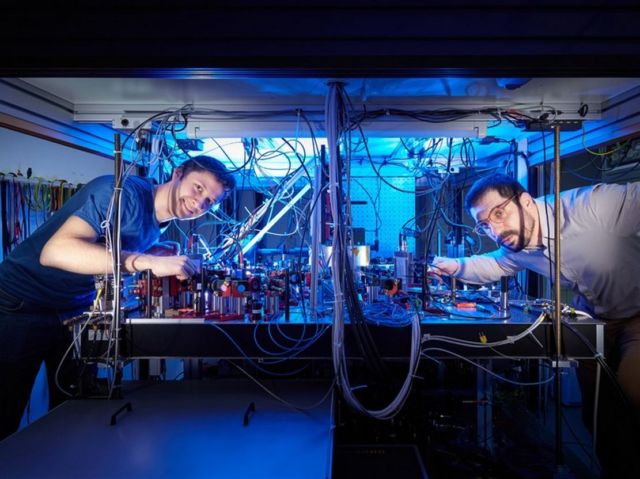Scientists discovered a speed limit that applies in the quantum world, determining minimum time for complex operations.
Even in the world of the smallest particles with their own special rules, things cannot proceed infinitely fast.
Physicists at the University of Bonn have now shown what the speed limit is for complex quantum operations. The study also involved scientists from MIT, the universities of Hamburg, Cologne and Padua, and the Jülich Research Center. The results are important for the realization of quantum computers, among other things. They are published in the prestigious journal Physical Review X, and covered by the Physics Magazine of the American Physical Society.
Suppose you observe a waiter (the lockdown is already history) who on New Year’s Eve has to serve an entire tray of champagne glasses just a few minutes before midnight. He rushes from guest to guest at top speed. Thanks to his technique, perfected over many years of work, he nevertheless manages not to spill even a single drop of the precious liquid.
 Adjusting the laser beams: First author Manolo Rivera Lam (left) and principal investigator Dr. Andrea Alberti (right) at the Institute of Applied Physics at the University of Bonn. © Volker Lannert/University of Bonn
Adjusting the laser beams: First author Manolo Rivera Lam (left) and principal investigator Dr. Andrea Alberti (right) at the Institute of Applied Physics at the University of Bonn. © Volker Lannert/University of Bonn
A little trick helps him to do this: While the waiter accelerates his steps, he tilts the tray a bit so that the champagne does not spill out of the glasses. Halfway to the table, he tilts it in the opposite direction and slows down. Only when he has come to a complete stop does he hold it upright again.
Atoms are in some ways similar to champagne. They can be described as waves of matter, which behave not like a billiard ball but more like a liquid. Anyone who wants to transport atoms from one place to another as quickly as possible must therefore be as skillful as the waiter on New Year’s Eve. “And even then, there is a speed limit that this transport cannot exceed,” explains Dr. Andrea Alberti, who led this study at the Institute of Applied Physics of the University of Bonn.
Cesium atom as a champagne substitute
In their study, the researchers experimentally investigated exactly where this limit lies. They used a cesium atom as a champagne substitute and two laser beams perfectly superimposed but directed against each other as a tray. This superposition, called interference by physicists, creates a standing wave of light: a sequence of mountains and valleys that initially do not move. “We loaded the atom into one of these valleys, and then set the standing wave in motion – this displaced the position of the valley itself,” says Alberti. “Our goal was to get the atom to the target location in the shortest possible time without it spilling out of the valley, so to speak.”
source University of Bonn






Leave A Comment